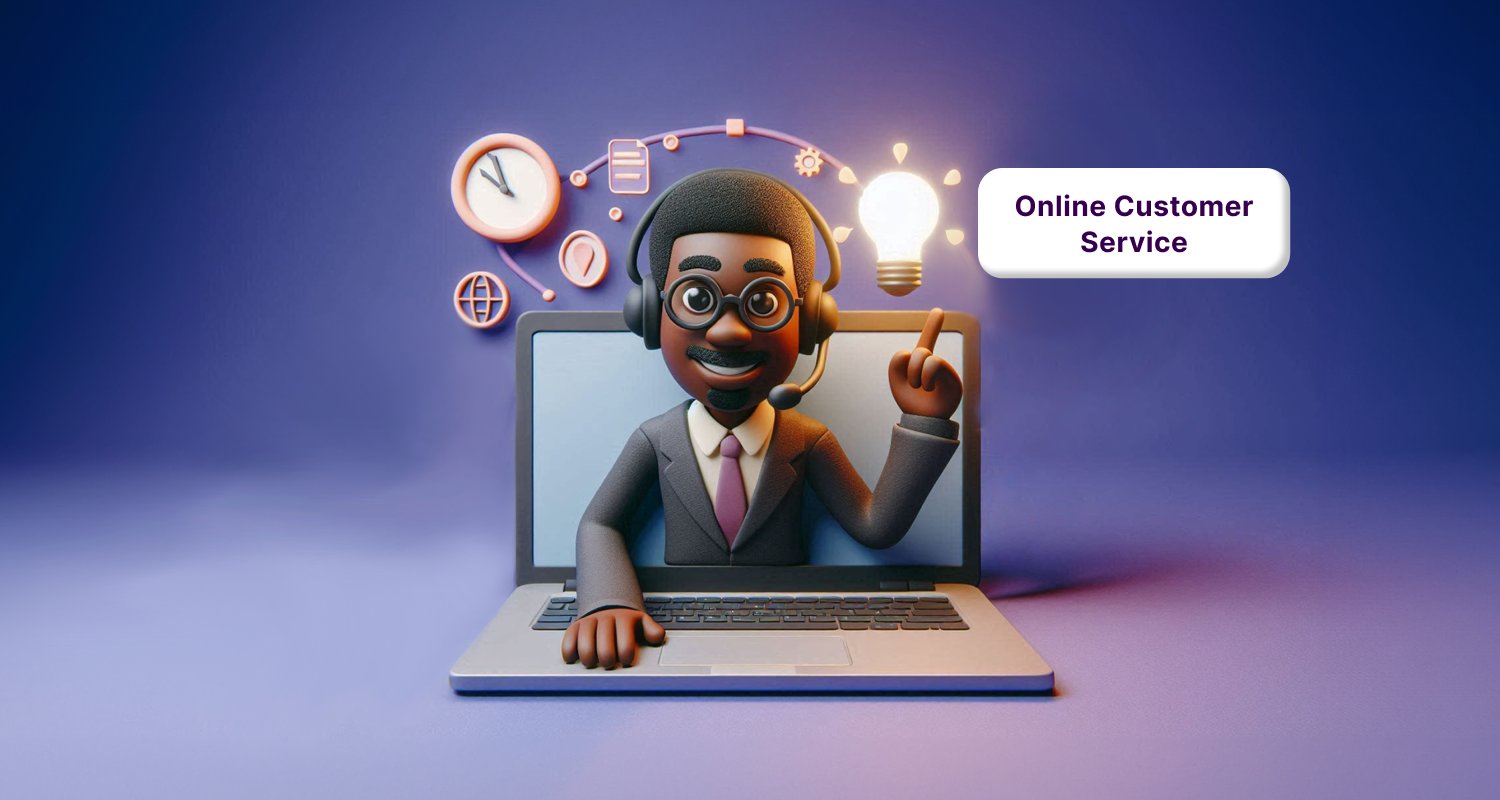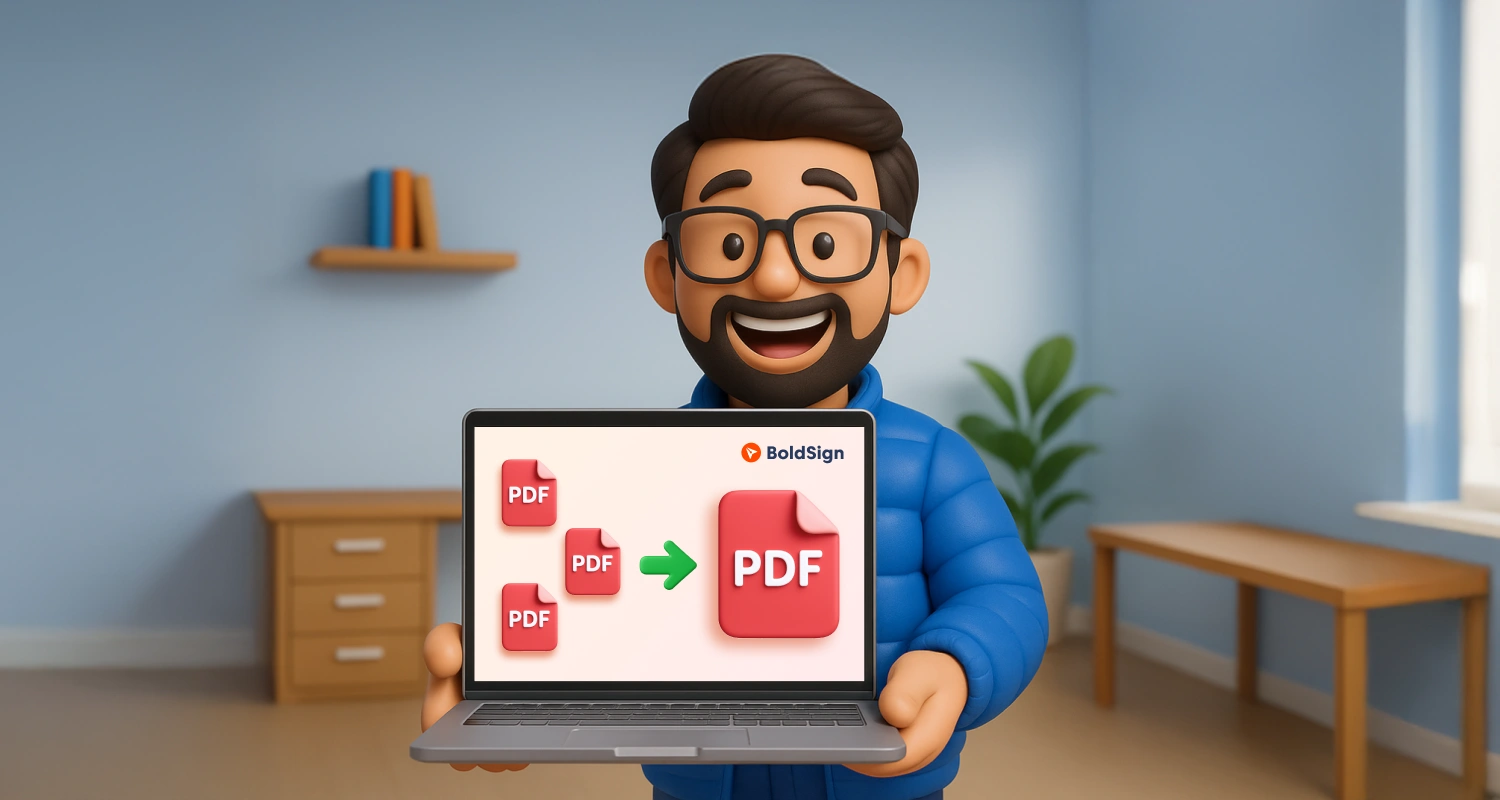For many years, traditional customer service—which was based on in-person meetings, phone conversations, and physical mail—was the foundation of customer assistance.
However, these methods were often limited by operational hours, geographic constraints, and slower response times.
Although human connection was prioritized in conventional customer service, it lacked the speed, scalability, and accessibility that today’s tech-savvy consumers require.
As a result, companies are increasingly using online customer service to replace or supplement conventional techniques, combining technological efficiency with a human touch.
In this article, you will learn why online customer service has grown into such an important tool for today’s interactions between customers and businesses.
What is online customer service?
Online customer service refers to the support provided to customers through digital channels such as email, live chat, social media, and customer self-service portals.
It enables businesses to assist customers efficiently and conveniently, regardless of their location.
While traditional customer service methods still have their place, online customer service has become the preferred option for many companies and consumers in today’s digitally inclined society.
For customers, it improves accessibility, speed, personalization, and flexibility. For companies, online customer service often involves automating repetitive support tasks using tools such as ticketing software.
This allows agents to spend more time addressing complex issues and ultimately leads to a higher number of problems being resolved.
Furthermore, modern online customer service can make it easier for businesses to collect and analyze customer data, which helps to anticipate needs and customize recommendations.
Smarter Online Support—Free for Startups
Deliver stellar service with BoldDesk’s robust features designed to scale with your team.
The key components of effective online customer service
A company may decide to invest in an online business but might not be successful due to poor communication or bad customer service.
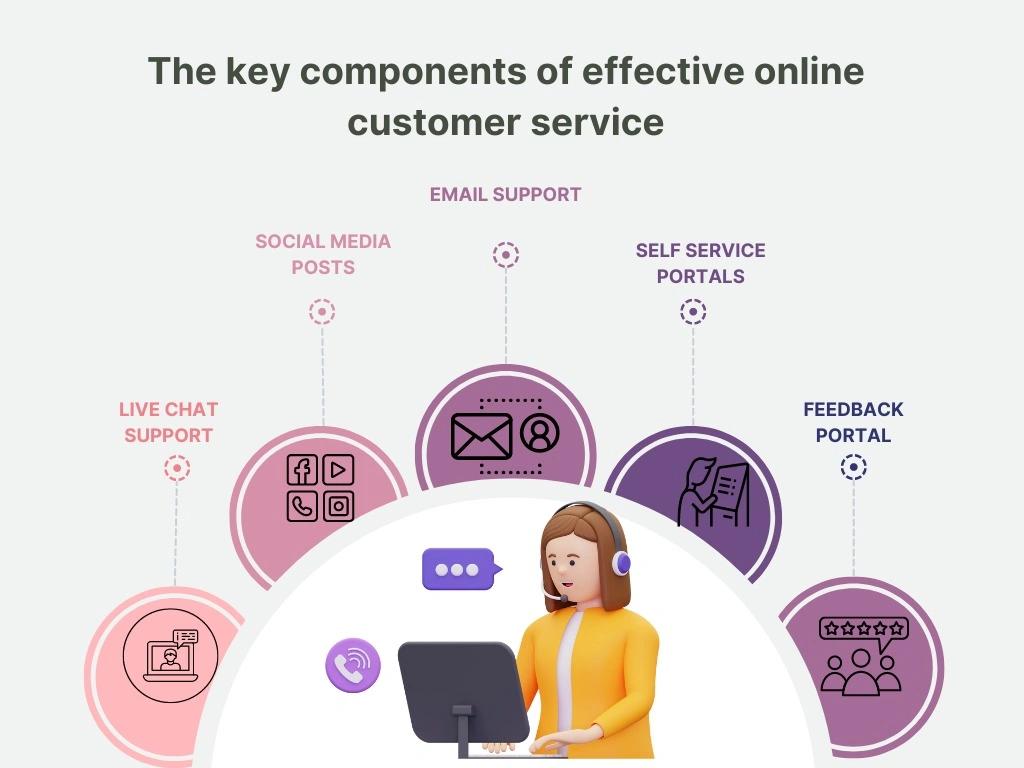
Here are some ways a business can better their communication with their online customers.
- Live chat support: Customers communicate with the agent through a chat box in real-time on a company’s website. Live chat provides instant responses to questions and concerns raised by customers, and agents can communicate with more than one client at the same time.
- Social media support: Another popular support channel is social media, such as Facebook, X, or Instagram. Brands can engage with their clients by addressing comments, messages, and mentions to resolve issues or provide whatever assistance is needed.
- Email support: Customers can use email to get answers to their more complex questions, and support agents respond by providing thorough solutions or information.
- Self-service portals: Here, a customer can access online resources such as FAQs, knowledge bases, and troubleshooting guides, which empower customers to find solutions independently.
According to a report by Higher Logic, 77% of consumers believe that organizations offering self-service options for customers seeking support are viewed more favorably.
- Feedback portal: A platform like this allows customers to provide feedback on their experience with a brand. It can help businesses improve their product offerings.
How to improve your online customer service
One of the best ways to create a lasting relationship with your customers is by solving their problems, answering their questions, and being there for them when needed.
Let’s see how you can improve your online customer service to influence their purchasing decisions.
Communicate with your customers clearly
Effective customer communication is the most important thing a brand can offer because it ensures they understand what to expect, including the features, pricing, and terms of service, reducing the likelihood of misunderstanding.
Transparent and open communication builds trust between the customer and a business.
Pro tips:
- Use easy-to-understand language to convey your message clearly.
- If you’re providing instructions or guidance, make sure they are clear and actionable.
- After providing information or instructions, give customers the opportunity to ask questions.
Invest in multichannel support
This improves online customer service by letting customers choose their preferred communication channel, such as live chat, email, or social media, making it convenient for them to reach out.
It also enables businesses to engage with customers in real-time, fostering stronger connections and accessibility.
Pro tips:
- Know where your audience is and how they prefer to engage.
- Maintain consistency across all online channels to reinforce your brand identity.
- Equip your team with the necessary skills and resources to deliver exceptional service across all channels.
Quickly respond to your customers
Some of the main benefits of online customer service are the response time and its easy accessibility.
According to the 2023 Sprout Social Index, 76% of customers value a brand that offers a quick response, and nearly 70% expect a response in less than 24 hours.
If you must ask your customers to hold, explain why this is happening, get their contact information, and offer a scheduled chat.
Although the customer has not received a solution to their problems, they will be happier because of your fast response and respect of their time.
Pro tips:
- Use ticketing software such as BoldDesk to stay organized and manage customer inquiries effectively.
- Use canned responses for common answers to provide consistency and then customize them as necessary to suit each customer’s situation.
When you respond quickly to your customer concerns, it makes your customers feel valued.
Empower your employees
Your employees are the people who interact with your customers every single day.
They are the people customers depend on to answer questions or help where necessary. Equip them well.
Pro tips:
- Offer thorough training programs to give employees the knowledge, skills, and practice necessary to improve their customer service.
- Invest in technology and tools that empower employees to deliver better online customer service, such as contact management, live chat software, and knowledge bases that provide easy access to information.
- Trust your employees to make sound decisions and handle online customer interactions
Personalize support based on customer data
This involves using customer data to customize the customer service experience to each person’s preferences, habits, and needs.
Understanding a customer’s history allows businesses to deliver a more relevant, efficient, and empathetic customer experience that leads to satisfaction and higher revenue.
A report from Twilio reveals that 66% of consumers would abandon a brand if their experience lacks personalization.
Pro tips:
- Divide your customer base to smaller groups based on common characteristics or behavior to customize support strategies to meet specific needs of each segment.
- Respect customer preferences regarding data usage and provide options for opting out of personalized communication if desired.
- Refer to previous online interactions or conversation history to provide relevant product recommendations and solutions.
Proactive customer support
Instead of waiting for customers to reach out with issues or questions, businesses need to use reporting and analytic tools to gauge and analyze common customer pain points.
Pro tips:
- Analyze customers’ behavior and past interactions to anticipate their needs and potential issues before they arise.
- Keep customers informed about order status, account updates, or upcoming events through proactive notifications via email, SMS, or push notifications.
Promote customer-centricity
This involves transforming online customer service from a transactional exchange into a relationship-building opportunity, where businesses prioritize customer satisfaction and engagement at every touchpoint.
Pro tips:
- Offer support across various channels such as chat, email, social media, and phone, and ensure a consistent experience regardless of the platform.
- Develop a comprehensive knowledge base, FAQs, and tutorials to enable customers to find answers and troubleshoot issues independently.
- Be transparent about policies, pricing, and product information, fostering trust among customers.
Collect and act on feedback
Feedback offers a platform for customers to voice their concerns, questions, or suggestions.
Through this, businesses get insight into areas where customers run into difficulties or dissatisfaction, allowing them to address these pain points.
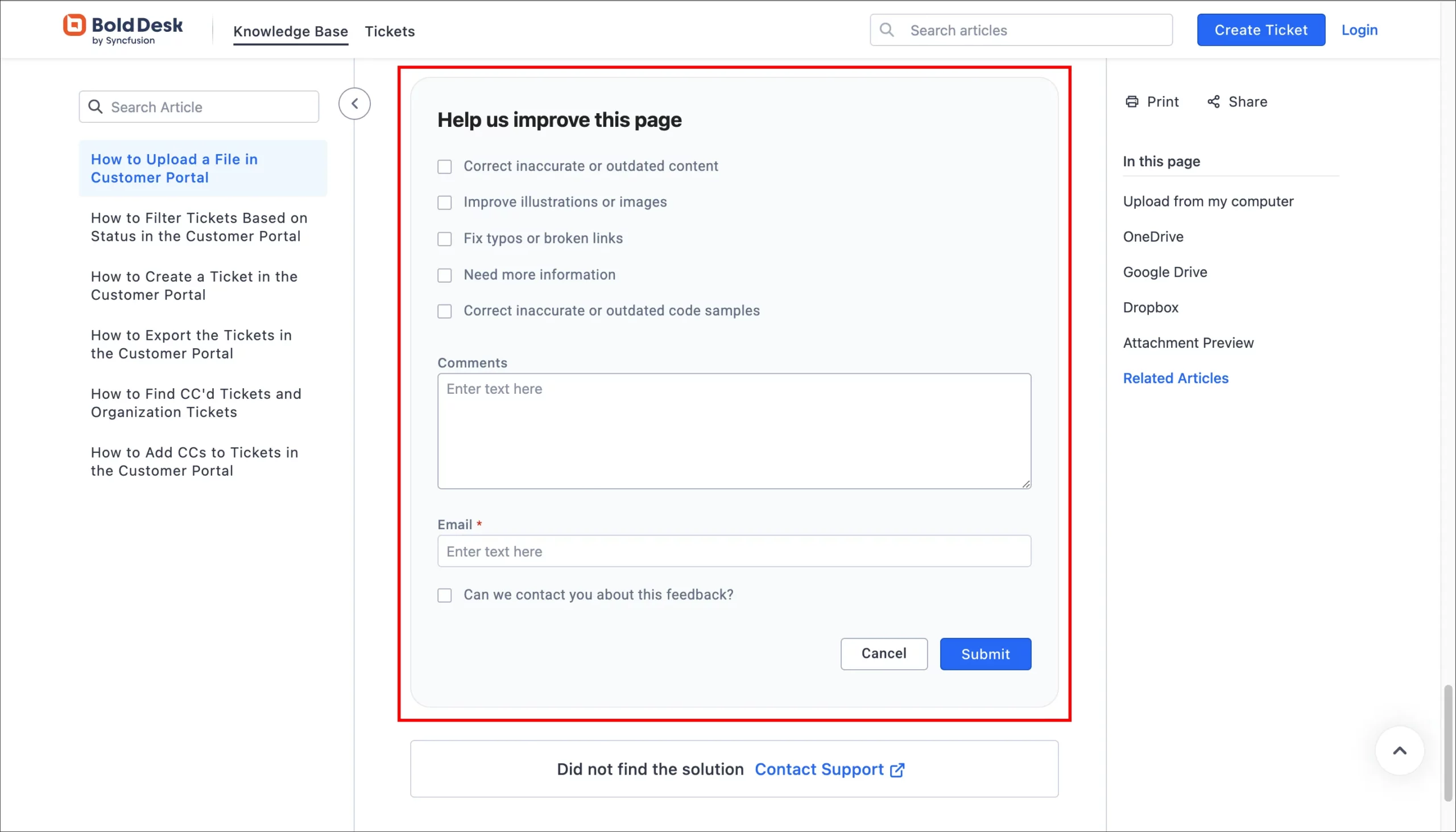
Pro tips:
- Offer multiple online channels for feedback and ensure that they are easily accessible to customers.
- Regularly monitor customer feedback and measure your customer satisfaction score at every online interaction.
- Acknowledge both positive and negative feedback and thank your customers for taking the time to share their thoughts.
Importance of online customer service
Let’s see how online service can offer numerous benefits for both businesses and the customers.
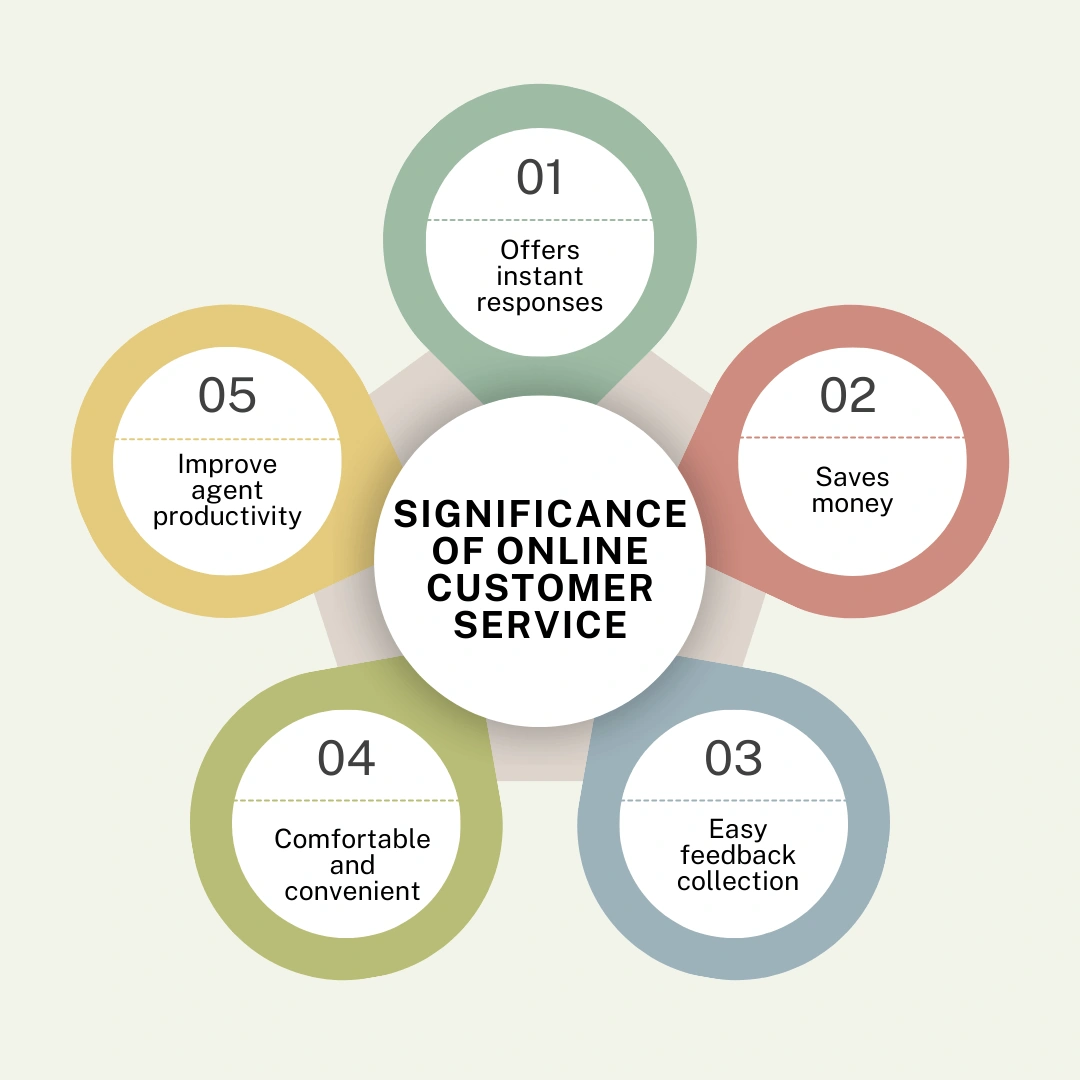
- Offers instant responses: With the help of collaboration tools such as chatbots, live chats, Gmail shared inboxes, and mobile apps, businesses can provide instant assistance anywhere and anytime, even after regular working hours.
- Saves money: Online service can be more cost-effective than traditional methods like phone support. It reduces expenses related to infrastructure, staffing, and telecommunications.
- Easy feedback collection: Online support is an avenue for collecting valuable feedback from customers and keeping records for future reference.
- Comfortable and convenient: Customers no longer have to leave their homes to get help from a service provider or wait on hold for hours on their phones. They can get assistance anytime.
- Improve agent productivity: With online customer service tools, such as automated responses and chatbots, businesses can handle multiple inquiries simultaneously. This reduces customer wait times and increases efficiency, leading to higher satisfaction levels.
Excellent 3 online customer service tools
As customers increasingly turn to online support, companies are making it a top priority.
The following are some of the best tools for providing fast solutions to customers.
BoldDesk
BoldDesk is a cloud-based ticketing system designed to enhance online customer service, especially for businesses with clients and teams spread across different time zones.
It offers the following features to improve your online customer service experience:
- Omnichannel support: BoldDesk centralizes customer interactions from email, live chat, and social media, ensuring that support is accessible and responsive anytime, anywhere.
- Online ticket management: Agents can organize, prioritize, and track tickets in real time, enabling seamless collaboration across global offices without delays or data silos.
- Self-service knowledge base: With efficient online documentation tools, businesses can build and maintain a 24/7 self-service portal, empowering customers to find answers even outside business hours.
- Remote accessibility: As a cloud-based platform, BoldDesk allows support teams to work remotely and remain synchronized, no matter where they are in the world.
By operating entirely online, BoldDesk helps businesses deliver faster, more personalized support, boosting customer satisfaction across borders.
Slab
Slab is an online knowledge management platform designed to streamline both internal collaboration and customer self-service.
Its cloud-based nature allows teams and clients in different locations and time zones to access up-to-date information at any time.
With features like version control, intuitive content creation, and smart search, businesses can build and maintain a centralized knowledge base of FAQs, tutorials, and guides.
This ensures consistent, on-demand support while reducing the burden on live support teams—all managed and accessed online.
Notion
Notion is an online knowledge management system designed to streamline organization and collaboration across teams and projects.
It allows users to create, organize, and share documents, databases, and wikis in a unified, cloud-based platform, ensuring that all team members stay aligned.
By enhancing productivity through its customizable templates, real-time collaboration, and integration capabilities, Notion helps teams stay organized and work more effectively—whether you are at the office, working remotely, or on the go.
These features enable efficient information retrieval, streamline workflows, and foster better communication, ultimately improving team collaboration and project management.
Secure your business’s future through online customer service
Online customer service has made life easier. It saves customers time, since they no longer have to queue in a store somewhere or stay on hold on a call for hours waiting to be served.
BoldDesk enables you to provide better online customer service through our many tools. Try it for free, or sign up for a live demo to learn more about its features.
You can also contact the BoldDesk support team if you need further assistance.
Was this blog helpful? Please feel free to express your thoughts about online customer service in the comments section below.
Related articles
- Powerful Knowledge Management System Examples & Tips
- 13 Best Knowledge Management Software Tools (2025)
- 7 Proven Best Practices to Improve Your Knowledge Base
- 14 Best Live Chat Software Solutions for Businesses (2025)
Frequently asked questions
An online customer is an individual who engages with a business or brand primarily through digital channels.
This includes making purchases, seeking information, or receiving support via the internet.
Online customers interact with businesses through websites, social media, email, chatbots, or other online platforms, rather than through traditional face-to-face or phone interactions.
To effectively measure the performance of online customer service, consider tracking the following key metrics:
- Response time
- Resolution time
- Customer satisfaction score (CSAT)
- First contact resolution (FCR
- Customer effort score (CES)
- Abandonment rate


















 Email Ticketing System
Email Ticketing System Shared Inbox Software
Shared Inbox Software Multi Brand Help Desk
Multi Brand Help Desk Internal Help Desk Software
Internal Help Desk Software Trouble Ticketing Software
Trouble Ticketing Software Mobile Help Desk
Mobile Help Desk 










